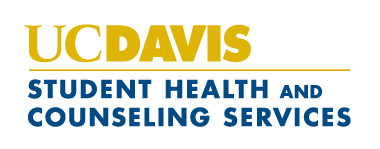Overview of Prescription Drug Abuse
Following marijuana and alcohol, prescription drugs are the most commonly abused substances in the United States. A common misconception is that prescription drugs are safer than illicit drugs, but this is not the case when they are not taken as prescribed. A prescription drug is abused when a doctor did not intend the amount taken, when the drug is used for another purpose than prescribed, or a person who was not prescribed the drug takes the drug. Prescription drug abuse can cause adverse health effects, put the user at risk for addiction, and in some cases result in overdose. The risk of overdose greatly increases when prescription drugs are taken with other drugs or alcohol.
Prescription Opioids
Prescription opioids are pain relievers including codeine, fentanyl, hydrocodone (Vicodin), hydromorphone, meperidine, methadone, morphine, oxycodone (OxyCotin), and Oxymorphone. Prescription opioids are used recreationally for their ability to produce a sense of euphoria and decrease pain. Abuse of opioid pain relievers is ever increasing and overdose deaths have more than quadrupled in the last 15 years. More people die from prescription opioid overdose than all other drugs combined. The highly addictive properties of opioids contribute to their abuse.
Effects
Opioids cause drowsiness, constipation, depressed respiration, and in some cases hypoxia (insufficient amount of oxygen reaching the tissues), which can cause brain damage. Slowed breathing is the most dangerous adverse effect as this is a common cause of opioid overdose. Slowed breathing due to opioid use is particularly dangerous when combined with other drugs or alcohol. For more information on overdose, withdrawal and general opioid facts, visit the Opiates Health Topic.
Prescription Stimulants
Prescription Stimulants are used for treating Attention Deficit Hyperactivity Disorder. Types of prescription stimulants include amphetamines (Aderall), dextroamphetamine, and methylphenidate (Concerta, or Ritalin). Prescription stimulants are abused for their ability to increase alertness and attention, suppress appetite, and boost energy.
Effects
Abuse of prescription stimulants can dangerously raise body temperature, cause irregular heartbeat due to increased blood pressure and heart rate, narrow blood vessels, and increase the risk of heart failure or seizures. In combination with alcohol, stimulants mask the depressant effect of alcohol and can increase the risk of alcohol overdose. Withdrawal symptoms of stimulants include depression, tiredness, and sleep problems.
For more general information about stimulants, visit the Stimulants Health Topic.
Prescription Sedatives
Prescription sedatives are central nervous system depressants for relieving anxiety and sleep problems. Prescription sedatives include barbituarates, benzodiazepines (Valium, Xanax), and eszopiclone (Lunesta). Sedatives are abused for their ability to create a state of relaxation and reduced anxiety. It is dangerous to mix sedatives with other drugs, including alcohol. Mixing sedatives with other drugs can produce severe impairment, dangerously slowed breathing and a decreased heart rate.
Effects
Sedatives slow down brain activity, cause sleepiness, slurred speech, poor concentration, confusion, dizziness, loss of coordination, and problems with memory.
How We Can Help
If you think you or a friend may have an issue with prescription drug abuse, call (530) 752-6334 or go to Health-e-messaging and log in to schedule an appointment with the Alcohol, Tobacco and Other Drug Intervention Services Coordinator. There is no charge for the confidential appointment.
